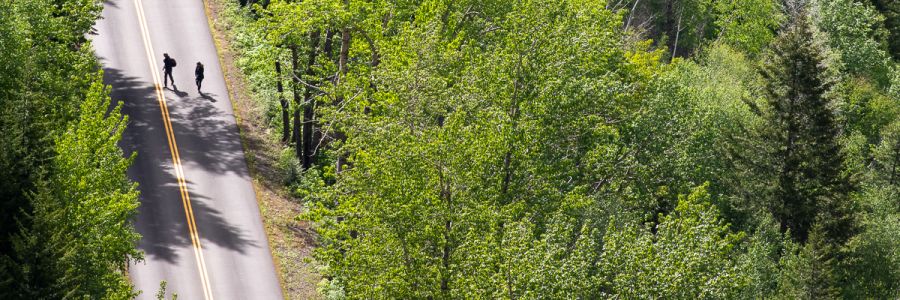(Please note the deadlines associated with each task below. You must meet these deadlines to make satisfactory progress on your CEP. The page guideline is for double-spaced pages)
1. Project Proposal
You must write a project proposal in the fall semester of your second year and submit it to the faculty member you would like to guide your CEP. Pick something interesting to you and challenging. It should 1) show that you can take the initiative, 2) allow you to use campus and/or community resources to accomplish your goals, 3) impact a current environmental issue, and 4) Allow you to get something done, to make a difference. In other words, the project must go beyond book-based research.
(Two pages. Complete by October 15th)
Your engagement work should start as soon as your proposal is approved and should be wrapped up by the third week of the spring semester.
2. Written Project Portfolio
The portfolio is a 25-30 page document detailing your project. It should be written during, and after, the engagement work you do. Completing each stage of the written portfolio by the deadlines indicated will keep you on track. The portfolio will include the following elements:
a) Introduction
Give a summary of your project. (This summary could be your updated and improved proposal). Describe what you plan to do and what you hope to accomplish. Explain the importance of your work and how it is related to environmental philosophy. Show what values your project demonstrates. Explain its contribution to social justice and environmental sustainability.
(2 pages. Complete by week 4 of the spring semester)
b) Background Context and Plan
Describe what others have done in this area. How does your contribution build on existing efforts? Explain the logistics of your engagement work. What will you do? In what order? How will you do it?
(3 pages minimum. Complete by week 4 of the spring semester)
c) Theoretical Applications
Here you outline the key ideas learned in at least three of the five core graduate seminars. Explain the main theoretical ideas from the class and show how they inform your project. This is the part of the CEP most like a traditional philosophy paper. Be thorough and creative.
(Write 3-5 pages for each seminar. Complete one by the end of week 6, a second by week 8, a third by week 10)
d) Actions Taken
List all the engagement activities you completed. Be sure to explain what each step entailed. It's okay if you ran into some dead ends. Explain why something worked or why it did not. Show the reader everything you managed to do.
(2-3 pages. Your engagement activities should start in the fall semester as soon as your proposal is approved. They should be complete by week 3 of the spring semester. Write them up as you do them so that the activities are fresh. Polish these descriptions in the portfolio by week 12)
e) Accomplishments and Challenges
Explain what you achieved. Tell us what you feel best about. Also include some reflection on the parts that did not go so well. How might you advise someone hoping to repeat your project? What other avenues do you think you should have explored? Compare what you accomplished to what you planned.
(2-3 pages. Complete by week 14)
(Note that your completed portfolio must be uploaded to the University's like any thesis or dissertation as a condition of graduation)
3. Presentation
You will give a presentation of your work to your CEP supervisor, the philosophy faculty, and your peers. Your presentation should last about 45 minutes and you should budget additional time for questions. It will take place during an afternoon we choose together the week before finals. Be sure to invite people you have engaged with throughout your project. It is a chance to publicly showcase your experience.
4. E-folio
You will create an e-folio (webpage) to display your final project using the Cascade CMS administered by the University. Cascade takes some effort to learn. To help you with this, there is an introductory training video on how to use Cascade, Zoom by Cascade staff, and a wide-ranging support page.
Request access to Cascade by the first week of the semester. (Site name is 'Student Projects', manager is Christopher Preston (christopher.preston@umontana.edu), URL is /student-projects/default.php). Watch the introductory video by the end of week 2.
Ideally, you will start playing around with Cascade as soon as you have access. You should start building the website by week 6 of the spring semester at the latest. Be sure to budget at least 8 weeks to do a good job.
There is flexibility in how you put together your site. Do your best to make it visually appealing. You can use some text and structure from your portfolio, but be sure to add some images, some useful links, and some video/audio. (Note that images and video/audio will require ). Your webpage should also contain a link to a pdf of your written portfolio. You can look for ideas on how to structure your page from previous students here. Think of this page as an advertisement for your skills, knowledge, and experience. Previous students have used their pages to their advantage in job applications.
Your website should develop as the semester unfolds. It must be finished by the end of week 14).
